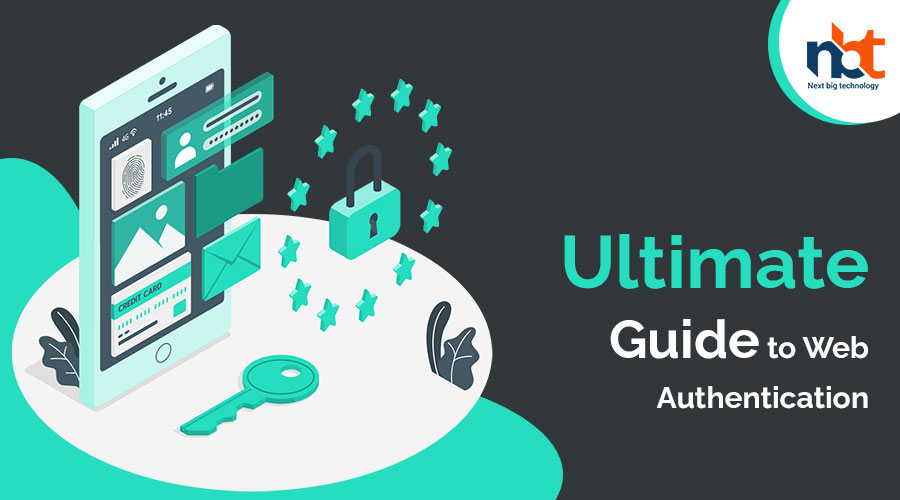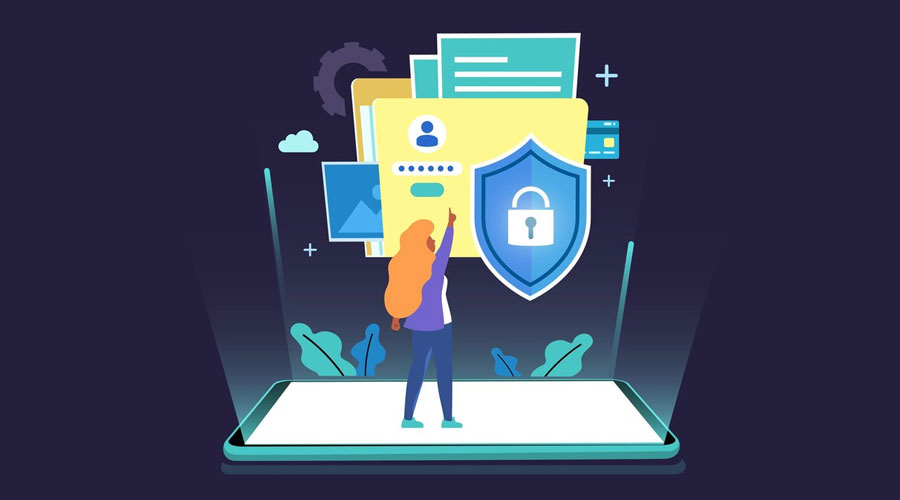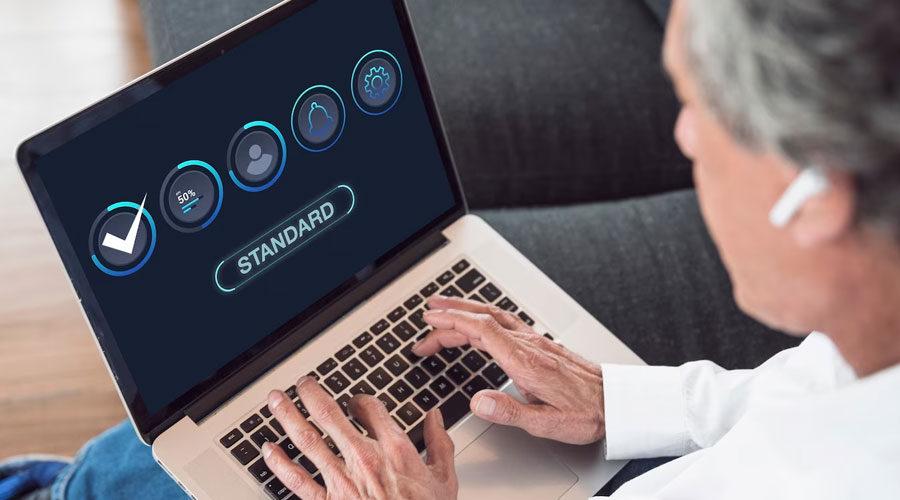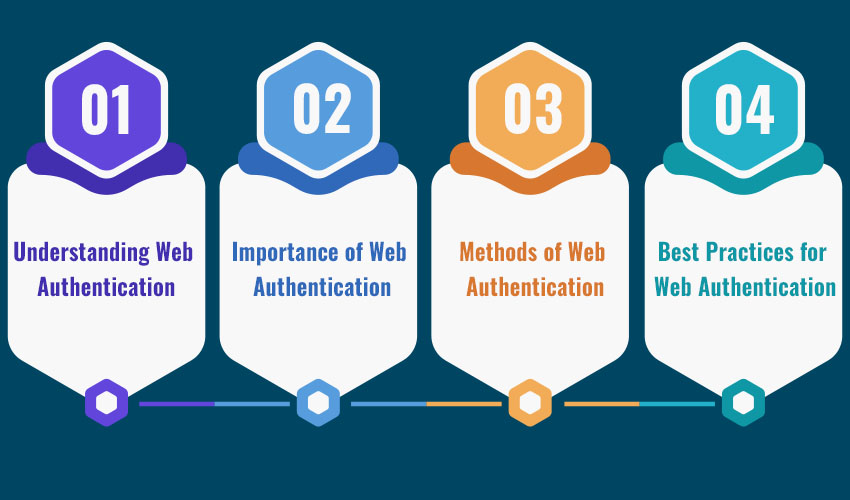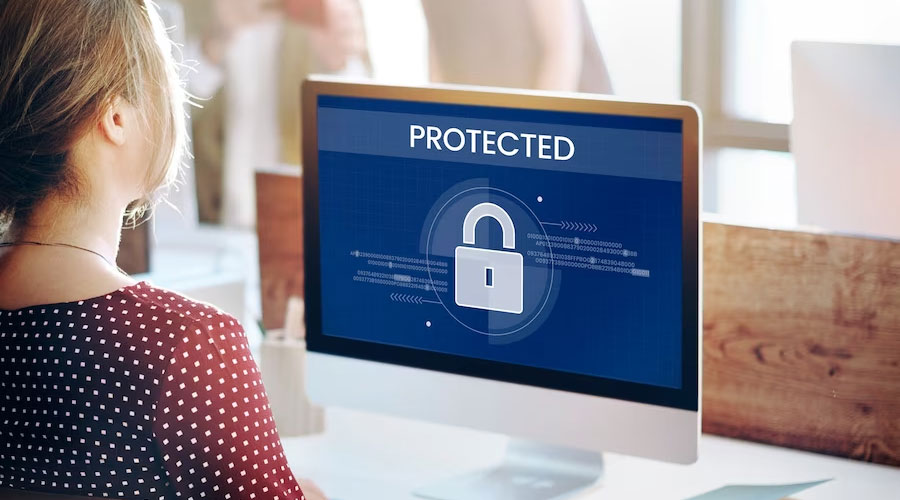Table of Contents
Ultimate Guide to Web Authentication services
In today’s digitally driven world, ensuring the security of online interactions is paramount. As businesses and individuals increasingly rely on web services for various purposes, the need for robust authentication measures becomes more pronounced. Enter web authentication services – a critical component in safeguarding sensitive information and protecting user identities across the vast landscape of the internet.
What are Web Authentication Services?
Web authentication services encompass a range of techniques and protocols designed to verify the identity of users accessing online resources. These services play a pivotal role in thwarting unauthorized access, preventing data breaches, and fortifying the overall security posture of websites and applications.
Key Components of Web Authentication Services:
- Multi-Factor Authentication (MFA): MFA is a cornerstone of modern authentication strategies. By requiring users to provide multiple forms of identification, such as passwords, biometric data, or one-time codes, MFA significantly enhances security by adding layers of defense against unauthorized access.
- Single Sign-On (SSO): SSO streamlines the authentication process by allowing users to access multiple applications with a single set of credentials. This not only enhances user convenience but also reduces the risk of password fatigue and simplifies identity management for administrators.
- OAuth and OpenID Connect: OAuth and OpenID Connect are industry-standard protocols used for authorization and authentication, respectively. OAuth enables secure delegation of access without disclosing user credentials, while OpenID Connect builds on OAuth to provide authentication services, making it easier for users to sign in to various applications using their preferred identity provider.
- Passwordless Authentication: Recognizing the limitations and vulnerabilities associated with traditional password-based authentication, many organizations are adopting passwordless authentication methods. These may include biometric authentication, hardware tokens, or one-time passcodes sent via email or SMS, offering a more secure and user-friendly alternative to passwords.
Implementing Web Authentication Services:
- Assess Your Security Needs: Begin by evaluating your organization’s security requirements, compliance obligations, and user experience expectations. This will help determine which web authentication services are best suited to your specific use case.
- Choose the Right Technologies: Select authentication technologies and protocols that align with your security goals, infrastructure capabilities, and user preferences. Consider factors such as scalability, interoperability, and support for emerging standards when making your decision.
- Integrate with Existing Systems: Seamless integration with existing identity management systems, directory services, and application architectures is essential for a smooth deployment of web authentication services. Ensure compatibility and interoperability to minimize disruptions and maximize efficiency.
- Educate Users: User awareness and training are critical components of any authentication strategy. Educate users about the importance of strong authentication practices, such as choosing complex passwords, safeguarding personal information, and recognizing phishing attempts.
Benefits of Web Authentication Services:
- Enhanced Security: By implementing robust authentication measures, organizations can better protect sensitive data, mitigate the risk of breaches, and safeguard user identities.
- Improved User Experience: Streamlined authentication processes, such as SSO and passwordless authentication, enhance user convenience and productivity, leading to higher satisfaction and engagement.
- Regulatory Compliance: Compliance with data protection regulations, such as GDPR and HIPAA, requires robust authentication mechanisms to safeguard sensitive information and ensure privacy rights are upheld.
How to Create a Ultimate Guide to Web Authentication
In today’s digital age, ensuring the security of online information is paramount. With cyber threats looming large, web authentication stands as the primary defense mechanism against unauthorized access and data breaches. Crafting a comprehensive guide to web authentication is not only beneficial for developers and website owners but also essential for users to understand the importance of safeguarding their online accounts. Let’s delve into the essential steps to create the ultimate guide to web authentication.
- Understanding Web Authentication: Begin by elucidating the concept of web authentication. Define terms like authentication, authorization, and encryption. Explain the significance of robust authentication mechanisms in safeguarding user data and preventing unauthorized access.
- Types of Authentication: Explore the various types of authentication methods available, including password-based authentication, multi-factor authentication (MFA), biometric authentication, and token-based authentication. Discuss the strengths and weaknesses of each method to help readers make informed decisions.
- Implementing Secure Password Policies: Educate readers on the importance of strong passwords and password management. Offer tips on creating complex passwords, using password managers, and implementing policies such as password expiration and account lockout to enhance security.
- Introducing Multi-Factor Authentication (MFA): Highlight the effectiveness of MFA in adding an extra layer of security to user accounts. Provide guidelines for implementing MFA using methods such as SMS codes, authenticator apps, biometric verification, or hardware tokens.
- Securing Communication Channels: Emphasize the significance of secure communication protocols such as HTTPS to protect data transmitted between clients and servers. Explain the role of SSL/TLS certificates in encrypting sensitive information and preventing man-in-the-middle attacks.
- Protecting Against Common Threats: Address common security threats such as phishing attacks, brute force attacks, and session hijacking. Offer practical advice on identifying and mitigating these threats through techniques like CAPTCHA, rate limiting, and session management.
- API Authentication and Authorization: Discuss best practices for securing APIs used for communication between web applications and third-party services. Cover topics such as OAuth authentication, API keys, and role-based access control (RBAC) to ensure secure data exchange.
- Continuous Monitoring and Updates: Stress the importance of regular security audits and updates to stay ahead of emerging threats. Encourage readers to monitor system logs, conduct vulnerability assessments, and promptly patch any security vulnerabilities.
- Educating Users: Highlight the role of user education in maintaining a secure online environment. Provide tips for users on recognizing phishing attempts, practicing good password hygiene, and staying vigilant against social engineering tactics.
- Resources and Further Reading: Conclude the guide by providing additional resources for readers to delve deeper into web authentication best practices. Include links to relevant articles, books, online courses, and security frameworks to facilitate ongoing learning.
Why Should You Go for Ultimate Guide to Web Authentication
In today’s digital age, where online security breaches are becoming increasingly common, safeguarding our personal information has never been more critical. With the rise of cyber threats, the need for robust web authentication measures has become paramount. This is where the Ultimate Guide to Web Authentication steps in as your beacon of protection in the vast online realm.
So, why should you embark on this journey towards mastering web authentication? Let’s delve into the compelling reasons:
- Enhanced Security: The Ultimate Guide to Web Authentication equips you with comprehensive knowledge and strategies to fortify your online security. By implementing advanced authentication techniques such as multi-factor authentication (MFA) and biometric authentication, you can significantly reduce the risk of unauthorized access to your sensitive data.
- Protection Against Cyber Threats: Cybercriminals are constantly evolving their tactics to exploit vulnerabilities in online systems. By familiarizing yourself with the intricacies of web authentication outlined in the Ultimate Guide, you can stay one step ahead of malicious actors and safeguard your digital assets effectively.
- User Convenience: Contrary to popular belief, robust security measures need not come at the expense of user convenience. The Ultimate Guide to Web Authentication offers insights into implementing seamless authentication experiences, striking the perfect balance between security and usability. From single sign-on (SSO) solutions to passwordless authentication methods, you’ll discover innovative approaches to streamline user access without compromising security.
- Compliance with Regulations: In an era of stringent data protection regulations such as the GDPR and CCPA, ensuring compliance is non-negotiable for businesses. The Ultimate Guide to Web Authentication provides invaluable guidance on adopting authentication protocols that align with regulatory requirements, helping you avoid costly penalties and reputational damage.
- Future-Proofing Your Security Strategy: As technology continues to evolve, so do the tactics employed by cyber threats. The Ultimate Guide equips you with the knowledge and skills to adapt your security measures accordingly, ensuring that your defenses remain robust in the face of emerging threats.
- Building Trust: In an increasingly interconnected digital landscape, trust is paramount. By demonstrating a commitment to implementing best-in-class web authentication practices, you instill confidence in your users, fostering long-term relationships and enhancing your reputation as a trustworthy custodian of data.
Essential Features of a Ultimate Guide to Web Authentication
In the ever-evolving landscape of cybersecurity, web authentication stands as a stalwart defender, safeguarding sensitive information from prying eyes and malicious actors. As the digital realm expands, so do the threats, making it imperative for businesses and individuals alike to fortify their online defenses. Enter the Ultimate Guide to Web Authentication – a comprehensive resource designed to navigate the complexities of securing online identities and transactions. In this article, we delve into the essential features that make this guide indispensable in the realm of cybersecurity.
- Multifactor Authentication (MFA): The cornerstone of robust web authentication, MFA adds layers of security by requiring users to provide multiple forms of verification. Whether through passwords, biometrics, tokens, or one-time codes, MFA significantly reduces the risk of unauthorized access, making it a non-negotiable feature in any ultimate guide to web authentication.
- Adaptive Authentication: Acknowledging the dynamic nature of cyber threats, adaptive authentication employs contextual cues to assess the risk level of each login attempt. By analyzing factors such as device information, location, and user behavior, this feature empowers systems to adapt their security measures accordingly, thwarting potential breaches before they occur.
- End-to-End Encryption: Privacy paramount, end-to-end encryption ensures that data remains unreadable to anyone without the proper decryption keys – not even service providers can access sensitive information in transit. Incorporating this feature into the ultimate guide to web authentication guarantees that communication between users and servers remains confidential, bolstering trust in online interactions.
- Single Sign-On (SSO): Simplifying access without compromising security, SSO enables users to authenticate once and gain entry to multiple interconnected systems or applications. By centralizing authentication processes, SSO streamlines user experience while minimizing the risk associated with managing multiple credentials.
- Continuous Monitoring and Threat Detection: Vigilance is key in the realm of cybersecurity. The ultimate guide to web authentication goes beyond initial authentication, implementing continuous monitoring and threat detection mechanisms to identify suspicious activities in real-time. By promptly flagging anomalies and unauthorized access attempts, this feature ensures swift response and mitigation of potential security breaches.
- User Education and Awareness: Empowering users with knowledge is as critical as implementing technological solutions. The ultimate guide to web authentication includes comprehensive educational resources to enhance user awareness of cybersecurity best practices. By fostering a security-conscious culture, organizations can significantly reduce the likelihood of successful cyber attacks stemming from human error or oversight.
- Scalability and Flexibility: As organizations evolve and expand, so do their authentication needs. The ultimate guide to web authentication offers scalable solutions that can adapt to growing user bases and evolving technological landscapes. Whether catering to small businesses or multinational enterprises, this feature ensures that authentication mechanisms remain effective and future-proof.
- Compliance with Industry Standards and Regulations: In an increasingly regulated environment, adherence to industry standards and regulations is non-negotiable. The ultimate guide to web authentication aligns with established frameworks such as GDPR, PCI DSS, and HIPAA, ensuring compliance while fortifying security measures against legal and regulatory risks.
Advanced Features Ultimate Guide to Web Authentication
In today’s digital age, securing online identities and data has become more critical than ever. With the increasing sophistication of cyber threats, traditional password-based authentication methods are proving to be insufficient. This has led to the rise of advanced web authentication technologies that offer enhanced security and user experience. In this ultimate guide, we’ll delve into the advanced features of web authentication and explore how they can bolster security and streamline user access.
- Biometric Authentication: One of the most innovative advancements in web authentication is the integration of biometric authentication methods such as fingerprint scanning, facial recognition, and iris scanning. By leveraging unique biological traits, biometric authentication provides an additional layer of security beyond traditional passwords. This technology not only enhances security but also offers a seamless and frictionless user experience, eliminating the need for users to remember complex passwords.
- Multi-Factor Authentication (MFA): Multi-factor authentication combines two or more independent authentication factors to verify a user’s identity. These factors typically include something the user knows (e.g., password), something they have (e.g., smartphone or hardware token), and something they are (e.g., fingerprint or facial recognition). By requiring multiple forms of authentication, MFA significantly reduces the risk of unauthorized access, even if one factor is compromised.
- Hardware-Based Authentication: Hardware-based authentication utilizes physical devices such as USB tokens or smart cards to authenticate users. These devices store cryptographic keys and perform authentication processes locally, adding an extra layer of protection against phishing attacks and credential theft. Hardware-based authentication is particularly valuable in high-security environments where robust authentication measures are paramount.
- Adaptive Authentication: Adaptive authentication employs machine learning algorithms to continuously assess the risk associated with a user’s access attempt. By analyzing various factors such as user behavior, location, and device attributes, adaptive authentication can dynamically adjust the authentication requirements. For example, if a user attempts to log in from a new device or location, adaptive authentication may prompt for additional verification steps to ensure the legitimacy of the access attempt.
- Single Sign-On (SSO): Single Sign-On enables users to access multiple applications or services with a single set of credentials. This not only enhances user convenience but also simplifies identity management for organizations. Advanced SSO solutions incorporate robust authentication protocols such as OAuth and OpenID Connect to ensure secure authentication across different domains and applications.
- Risk-Based Authentication: Risk-based authentication evaluates the risk level associated with each authentication attempt based on various parameters such as device reputation, geolocation, and recent user activity. Depending on the assessed risk level, the authentication system can adapt its response, ranging from seamless access for low-risk scenarios to additional verification steps for high-risk events. This proactive approach helps organizations thwart potential security threats before they escalate.
- Passwordless Authentication: Passwordless authentication eliminates the need for traditional passwords altogether, relying on alternative authentication methods such as biometrics, cryptographic keys, or one-time codes sent via email or SMS. By removing passwords from the equation, passwordless authentication mitigates the risk of password-related vulnerabilities such as phishing and credential reuse.
Ultimate Guide to Web Authentication Timelines
In today’s digital age, where the internet serves as the backbone of numerous services and transactions, ensuring the security of online platforms has become paramount. Among the crucial components of online security is web authentication, a process that verifies the identity of users accessing web applications or services. Understanding the timelines involved in web authentication is vital for implementing robust security measures. In this comprehensive guide, we delve into the intricacies of web authentication timelines and explore best practices for enhancing the security of your online presence.
Understanding Web Authentication Timelines
Web authentication timelines refer to the sequence of events that occur during the authentication process, from the moment a user attempts to access a web application to when access is granted or denied. These timelines typically consist of several key stages:
- Initiation: The authentication process begins when a user attempts to access a protected resource or perform a privileged action on a web application. This could involve logging in to an account, accessing sensitive data, or completing a transaction.
- Authentication Request: Upon initiating the authentication process, the user’s credentials are submitted to the web application for verification. This step involves transmitting the username, password, or other authentication factors to the server for validation.
- Validation and Authorization: The web application validates the user’s credentials to verify their identity. This may involve comparing the provided credentials against stored data in a database or communicating with an authentication service. Upon successful validation, the user’s authorization level is determined, dictating the actions they can perform within the application.
- Session Establishment: Once the user’s identity is confirmed, a session is established between the user and the web application. This session allows the user to interact with the application without having to reauthenticate for each subsequent action.
- Session Management: Throughout the user’s interaction with the web application, the session is continuously managed to ensure security and prevent unauthorized access. This includes monitoring session activity, enforcing session timeouts, and providing mechanisms for logging out or terminating sessions.
- Access Termination: The authentication process concludes when the user logs out or the session expires. Access to the web application is terminated, and the user may need to reauthenticate to regain access in the future.
Best Practices for Secure Web Authentication
Implementing robust security measures is essential to safeguarding the authentication process and protecting sensitive user data. Here are some best practices for enhancing web authentication security:
- Use Strong Authentication Methods: Implement multi-factor authentication (MFA) or biometric authentication to strengthen the authentication process and mitigate the risk of unauthorized access.
- Encrypt Data Transmission: Utilize secure communication protocols such as HTTPS to encrypt data transmitted between the user’s device and the web application, preventing eavesdropping and data interception.
- Employ Session Management Controls: Implement strict session management controls, including session timeouts, session revocation mechanisms, and secure session storage, to prevent session hijacking and unauthorized access.
- Regularly Update Authentication Mechanisms: Stay updated with the latest authentication technologies and security standards, and regularly update authentication mechanisms to address vulnerabilities and emerging threats.
- Monitor and Audit Authentication Activity: Implement logging and auditing mechanisms to monitor authentication activity, detect suspicious behavior, and investigate security incidents promptly.
By understanding the intricacies of web authentication timelines and adhering to best practices for secure authentication, you can fortify your online presence and safeguard sensitive data from unauthorized access and cyber threats.
How Much Does It Cost to Ultimate Guide to Web Authentication?
In today’s digital landscape, where cybersecurity threats loom large, web authentication has become a critical aspect of online security. From protecting sensitive data to ensuring user privacy, implementing robust authentication measures is paramount for businesses and individuals alike. However, one common question that arises is: How much does it cost to implement effective web authentication? Let’s delve into this topic and explore the various factors involved in determining the cost of web authentication.
- Types of Web Authentication:Before delving into costs, it’s essential to understand the different types of web authentication methods available. These include:
- Password-based Authentication: The traditional method involving usernames and passwords.
- Multi-Factor Authentication (MFA): Adding an extra layer of security through methods like SMS codes, biometric scans, or hardware tokens.
- Single Sign-On (SSO): Allowing users to access multiple applications with a single set of credentials.
- OAuth and OpenID Connect: Protocols for delegated authorization, commonly used for social login and third-party authentication.
- Cost Factors:The cost of implementing web authentication can vary significantly based on several factors, including:
- Authentication Method: Different methods have different implementation costs. For instance, implementing MFA may require additional hardware or software solutions, which can increase costs.
- Scalability: The size and scale of your web application or system can impact costs. Larger systems may require more complex authentication solutions, resulting in higher costs.
- Integration Complexity: Integrating authentication mechanisms into existing systems or applications can vary in complexity, affecting both time and cost.
- Compliance Requirements: Industries like finance and healthcare may have specific regulatory compliance requirements, leading to additional costs for implementing compliant authentication measures.
- Maintenance and Support: Ongoing maintenance, updates, and support services are essential for ensuring the security and effectiveness of authentication systems, adding to the overall cost.
- Cost Breakdown:While it’s challenging to provide a precise figure due to the variables involved, here’s a general breakdown of potential costs:
- Software Costs: Licensing fees for authentication software or services.
- Hardware Costs: If implementing hardware-based authentication solutions.
- Development Costs: Hiring developers to integrate authentication mechanisms into your web application.
- Training Costs: Training staff on how to use and manage the authentication system.
- Maintenance Costs: Regular updates, patches, and support services.
- Cost-saving Strategies:Despite the potential costs, there are strategies to minimize expenses without compromising security:
- Open-source Solutions: Utilizing open-source authentication libraries or frameworks can reduce software licensing costs.
- Cloud-based Solutions: Opting for cloud-based authentication services can eliminate the need for hardware investments and reduce maintenance overheads.
- Outsourcing Development: Consider outsourcing authentication implementation to specialized firms, potentially reducing development costs.
- Prioritize Security: Investing in robust authentication measures upfront can prevent costly security breaches in the future.
How to Create a Ultimate Guide to Web Authentication – Team and Tech Stack
In today’s digital age, ensuring the security of user data is paramount for any web application. With the rise of cyber threats, implementing robust web authentication measures has become essential. However, creating a comprehensive guide to web authentication requires more than just technical expertise—it demands a well-rounded team and a carefully selected tech stack. In this article, we’ll explore how to assemble the ultimate guide to web authentication by focusing on both the human resources and the technological components involved.
Building Your Team:
- Security Experts: At the core of your team should be security experts who possess a deep understanding of web vulnerabilities and best practices in authentication. These professionals will be responsible for conducting security assessments, identifying potential risks, and implementing effective countermeasures.
- Developers: Skilled developers are indispensable for implementing authentication mechanisms seamlessly into your web application. They should be proficient in various programming languages and frameworks, such as JavaScript, Python, or Ruby on Rails, depending on your tech stack.
- User Experience (UX) Designers: While security is paramount, the user experience should not be compromised. UX designers play a crucial role in creating intuitive and user-friendly authentication workflows that strike the right balance between security and usability.
- Project Managers: Project managers ensure smooth coordination among team members, adherence to timelines, and effective communication with stakeholders. Their organizational skills are essential for keeping the project on track.
- Legal and Compliance Experts: Compliance with regulations such as GDPR, HIPAA, or PCI DSS is non-negotiable when handling user data. Legal and compliance experts will help navigate the complex landscape of data protection laws and ensure that your authentication practices remain compliant.
Selecting Your Tech Stack:
- Authentication Protocols: Choose appropriate authentication protocols based on your application’s requirements. Common options include OAuth 2.0 for delegated authorization, OpenID Connect for single sign-on (SSO), and JSON Web Tokens (JWT) for secure transmission of claims between parties.
- Identity Providers: Integrate reputable identity providers like Google, Facebook, or Microsoft Azure Active Directory to enable seamless authentication for users. Leveraging third-party identity providers not only simplifies the authentication process but also enhances security by offloading authentication responsibilities to trusted entities.
- Multi-Factor Authentication (MFA): Implement MFA to add an extra layer of security beyond passwords. This could include factors such as SMS codes, biometric authentication, or hardware tokens, significantly reducing the risk of unauthorized access.
- Secure Communication: Utilize HTTPS to encrypt data transmitted between the client and server, preventing eavesdropping and tampering. Additionally, consider implementing protocols like TLS (Transport Layer Security) to establish secure connections and mitigate various network-based attacks.
- Security Libraries and Frameworks: Leverage security libraries and frameworks such as OWASP (Open Web Application Security Project) for guidance on secure coding practices and libraries like bcrypt for password hashing. These resources provide pre-tested solutions to common security challenges, reducing the risk of vulnerabilities in your application.
Ultimate Guide to Web Authentication Process
In today’s digital landscape, where online security is paramount, understanding the web authentication process is crucial for both businesses and individuals. With cyber threats evolving constantly, implementing effective authentication measures not only safeguards sensitive data but also enhances user experience. In this comprehensive guide, we delve into the intricacies of web authentication, offering insights into its importance, methods, and best practices.
Understanding Web Authentication:
Web authentication, also known as login authentication, is the process of verifying the identity of a user attempting to access a web application or service. It ensures that only authorized individuals can gain entry, thereby preventing unauthorized access and potential security breaches. Authentication typically involves the presentation of credentials, such as usernames and passwords, to a system that verifies their validity.
Importance of Web Authentication:
- Security Enhancement: Effective authentication mechanisms serve as a barrier against unauthorized access, protecting sensitive data and resources from malicious actors.
- User Trust: By implementing robust authentication measures, businesses can instill confidence in their users regarding the security of their personal information, fostering trust and loyalty.
- Regulatory Compliance: Many industries are subject to regulatory requirements regarding data protection and privacy. Proper authentication practices help organizations comply with these regulations and avoid potential penalties.
Methods of Web Authentication:
- Password-Based Authentication: The most common method, where users authenticate themselves by entering a unique combination of username and password.
- Multi-Factor Authentication (MFA): Enhances security by requiring users to provide two or more forms of verification, such as passwords, biometrics, or OTPs (One-Time Passwords).
- OAuth and OpenID Connect: Protocols that enable secure authorization and authentication across different platforms and services, facilitating seamless user experiences.
- Biometric Authentication: Utilizes unique biological characteristics such as fingerprints, facial recognition, or iris scans to verify user identity.
- Single Sign-On (SSO): Allows users to access multiple applications with a single set of login credentials, streamlining the authentication process while maintaining security.
Best Practices for Web Authentication:
- Use Strong Password Policies: Encourage users to create complex passwords and regularly update them to mitigate the risk of unauthorized access.
- Implement MFA Whenever Possible: Incorporate multi-factor authentication to add an extra layer of security, reducing the likelihood of account compromise.
- Keep Software Updated: Regularly update authentication systems and software to patch vulnerabilities and stay ahead of emerging threats.
- Encrypt Data Transmission: Utilize HTTPS and TLS encryption protocols to secure data transmission between clients and servers, safeguarding sensitive information from interception.
- Educate Users: Provide guidance on best practices for password management and recognize phishing attempts to empower users in safeguarding their accounts.
Next Big Technology – Your Trusted Ultimate Guide to Web Authentication Partner
In the dynamic realm of technology, innovations constantly emerge, reshaping the landscape and revolutionizing how we interact with the digital world. Among these advancements, web authentication stands out as a crucial component in ensuring security and seamless user experiences across various online platforms. As we anticipate the next big leap in this domain, it becomes imperative to have a trusted partner to navigate these advancements effectively. Welcome to your ultimate guide to web authentication partners, where we delve into the future of this vital technology.
Understanding the Significance of Web Authentication: Web authentication serves as the gatekeeper to digital realms, safeguarding sensitive information and facilitating secure transactions. In an era dominated by cyber threats and data breaches, the need for robust authentication mechanisms has never been more pressing. From traditional password-based methods to cutting-edge biometric authentication, the evolution of web authentication reflects a relentless pursuit of enhanced security and user convenience.
The Emergence of Next-Generation Authentication Technologies: As we look towards the horizon of technological innovation, several trends emerge that are poised to redefine web authentication. Among these trends, the adoption of passwordless authentication solutions stands out as a game-changer. By eliminating the reliance on easily compromised passwords, passwordless authentication methods such as biometrics, token-based authentication, and multi-factor authentication offer a more secure and user-friendly alternative.
Moreover, the rise of decentralized identity solutions leveraging blockchain technology holds immense promise in enhancing the security and privacy of web authentication. These solutions empower users with greater control over their digital identities while mitigating the risks associated with centralized authentication systems.
Navigating the Complexities with a Trusted Partner: Amidst the rapid evolution of web authentication technologies, businesses and organizations face the challenge of selecting the right solutions that align with their security needs and user experience goals. This is where having a trusted web authentication partner becomes invaluable. A reliable partner brings expertise, experience, and a deep understanding of emerging technologies to the table, guiding clients through the complexities of authentication implementation and optimization.
Choosing the Right Web Authentication Partner: When selecting a web authentication partner, several factors come into play. First and foremost is expertise in cutting-edge authentication technologies, including biometrics, adaptive authentication, and identity federation. Additionally, a partner’s track record of successful implementations and a commitment to ongoing support and innovation are essential considerations.
Furthermore, compatibility with existing systems and scalability to accommodate future growth are critical aspects to evaluate when choosing a web authentication partner. By partnering with a trusted provider that prioritizes security, usability, and innovation, organizations can future-proof their authentication strategies and stay ahead of evolving threats.
Enterprise Ultimate Guide to Web Authentication
In today’s digital landscape, where cybersecurity threats loom large and user experience is paramount, implementing robust web authentication measures is crucial for enterprises. With the proliferation of online services and the increasing sophistication of cyberattacks, enterprises must prioritize security without compromising usability. This comprehensive guide will delve into the intricacies of web authentication, offering insights and strategies to help enterprises fortify their defenses while delivering seamless user experiences.
Understanding Web Authentication:
Web authentication refers to the process of verifying the identity of users accessing web applications or services. It serves as the frontline defense against unauthorized access and malicious activities. Traditional methods like passwords have become susceptible to breaches due to their inherent vulnerabilities, such as weak passwords, phishing attacks, and credential stuffing.
Key Components of Web Authentication:
- Multi-Factor Authentication (MFA): MFA adds an extra layer of security by requiring users to provide multiple forms of verification, such as passwords, biometrics, security tokens, or one-time codes. By combining different authentication factors, MFA significantly reduces the risk of unauthorized access, enhancing overall security.
- Single Sign-On (SSO): SSO enables users to access multiple applications with a single set of login credentials. It streamlines the authentication process, improving user convenience and productivity while centralizing access control for administrators. However, careful implementation and robust security measures are essential to mitigate potential risks associated with SSO.
- OAuth and OpenID Connect: OAuth and OpenID Connect are widely adopted protocols for delegated authorization and authentication. OAuth facilitates secure authorization between applications, allowing users to grant limited access to their resources without sharing their credentials. OpenID Connect builds on OAuth to provide authentication services, enabling seamless and secure user authentication across different platforms.
Best Practices for Enterprise Web Authentication:
- Implement Strong Password Policies: Enforce password policies that require users to create complex passwords and regularly update them. Additionally, consider implementing password management solutions to securely store and manage credentials.
- Embrace Biometric Authentication: Leverage biometric authentication methods such as fingerprint, facial recognition, or iris scanning to enhance security and user experience. Biometrics offer a convenient and secure way to verify user identities, reducing reliance on traditional password-based authentication.
- Employ Risk-Based Authentication: Adopt risk-based authentication mechanisms that analyze user behavior and contextual factors to assess the level of risk associated with each authentication attempt. By dynamically adjusting authentication requirements based on risk levels, enterprises can better protect against fraudulent activities.
- Stay Abreast of Emerging Technologies: Keep pace with advancements in authentication technologies, such as passwordless authentication, behavioral biometrics, and adaptive authentication. Continuously evaluate and integrate innovative solutions to strengthen security posture and adapt to evolving threat landscapes.
- Educate Users on Security Best Practices: Educate users about the importance of strong authentication practices, such as avoiding password reuse, enabling MFA wherever possible, and recognizing phishing attempts. By promoting a culture of security awareness, enterprises can empower users to play an active role in safeguarding sensitive information.
Top Ultimate Guide to Web Authentication Companies
In today’s digital age, where cyber threats loom large, ensuring robust web authentication is paramount for individuals and businesses alike. With the proliferation of online services and the increasing sophistication of hackers, selecting the right web authentication company becomes crucial to safeguarding sensitive information and maintaining user trust. In this comprehensive guide, we delve into the top web authentication companies, empowering you to make informed decisions in fortifying your online security.
-
-
Next Big Technology:

NBT is highly focused on providing top-notch development solutions at a very affordable cost. By using their market experience and development experience, they are delivering proper solutions to clients and various industries for their custom requirements.
Location: India, USA, UK, Australia
Hourly Rate :< $25 per Hour
Employees: 50 – 249
Focus Area
- Mobile App Development
- App Designing (UI/UX)
- Software Development
- Web Development
- AR & VR Development
- Big Data & BI
- Cloud Computing Services
- DevOps
- E-commerce Development
Industries Focus
- Art, Entertainment & Music
- Business Services
- Consumer Products
- Designing
- Education
- Financial & Payments
- Gaming
- Government
- Healthcare & Medical
- Hospitality
- Information Technology
- Legal & Compliance
- Manufacturing
- Media
-
- Auth0: Auth0 specializes in identity verification and authentication, offering a scalable and customizable platform for developers to implement secure login mechanisms effortlessly. With support for social logins, passwordless authentication, and multi-tenant architectures, Auth0 caters to diverse authentication needs while ensuring top-notch security standards and compliance.
- Ping Identity: Ping Identity provides identity and access management solutions that enable organizations to securely manage user identities and access privileges. With its innovative approach to authentication, including risk-based authentication and identity federation, Ping Identity empowers businesses to strike a balance between security and user experience in the digital realm.
- ForgeRock: ForgeRock offers a comprehensive identity platform that encompasses authentication, authorization, and identity management capabilities. Its emphasis on standards-based protocols and open-source technologies makes it a preferred choice for enterprises seeking flexible and interoperable authentication solutions. With support for adaptive authentication and customer identity use cases, ForgeRock caters to a wide range of authentication requirements across industries.
- Microsoft Azure Active Directory: Microsoft Azure Active Directory (Azure AD) is a cloud-based identity and access management service that provides robust authentication and authorization capabilities for Microsoft’s ecosystem and beyond. With features such as conditional access, password protection, and seamless integration with Microsoft’s productivity suite, Azure AD offers a seamless authentication experience while ensuring stringent security controls.
- Google Identity Platform: Google Identity Platform offers a set of authentication and authorization services that leverage Google’s expertise in security and user identity management. From OAuth 2.0 authentication to identity federation with Google accounts, the platform provides developers with the tools needed to build secure and scalable authentication mechanisms for their applications.
- OneLogin: OneLogin offers a cloud-based identity and access management platform that streamlines authentication and access control processes for businesses. With features such as single sign-on, multi-factor authentication, and user provisioning, OneLogin simplifies identity management while bolstering security defenses against unauthorized access and data breaches.
Add Comparison Table Ultimate Guide to Web Authentication
In today’s digital age, where cybersecurity threats loom large, ensuring the safety and security of user data is paramount for businesses and individuals alike. Web authentication plays a crucial role in safeguarding sensitive information by verifying the identity of users accessing online services and resources. In this comprehensive guide, we’ll delve into the various methods of web authentication, compare their strengths and weaknesses, and explore best practices for implementing robust authentication mechanisms.
Understanding Web Authentication:
Web authentication, also known as user authentication or login authentication, is the process of validating the identity of users attempting to access web-based applications, services, or resources. It serves as the first line of defense against unauthorized access and protects against identity theft, data breaches, and other security risks.
Comparison Table:
| Authentication Method | Strengths | Weaknesses |
|---|---|---|
| Password-Based Authentication | Familiar to users, easy to implement | Susceptible to phishing, weak passwords pose security risks |
| Two-Factor Authentication (2FA) | Provides an additional layer of security | Requires additional user effort, may not be supported by all systems |
| Multi-Factor Authentication (MFA) | Offers enhanced security by combining multiple authentication factors | Increased complexity, potential usability issues |
| Biometric Authentication | Offers high level of security, difficult to impersonate | Requires specialized hardware, privacy concerns |
| Single Sign-On (SSO) | Streamlines access to multiple applications | Single point of failure, potential security risks if compromised |
Best Practices for Web Authentication:
- Implement Strong Password Policies: Encourage users to create complex passwords and regularly update them. Consider enforcing password complexity requirements and offering password management tools to enhance security.
- Adopt Multi-Factor Authentication (MFA): Require users to authenticate using multiple factors such as passwords, biometrics, or one-time codes. MFA significantly enhances security by adding an extra layer of protection against unauthorized access.
- Use Secure Authentication Protocols: Employ industry-standard protocols such as OAuth, OpenID Connect, or SAML for secure authentication and authorization processes. Ensure that communication between clients and servers is encrypted using HTTPS.
- Regularly Monitor and Audit Authentication Systems: Monitor login attempts, identify suspicious activities, and implement measures such as account lockout and CAPTCHA to prevent brute force attacks and unauthorized access.
- Educate Users About Security Best Practices: Raise awareness among users about the importance of strong passwords, avoiding phishing attempts, and recognizing signs of suspicious activity. Provide training and resources to empower users to protect their accounts.
FAQs on Ultimate Guide to Web Authentication
In the dynamic world of cybersecurity, web authentication stands as a crucial pillar in safeguarding digital assets and user information. With the proliferation of online services and the ever-present threat of cyber attacks, understanding the ins and outs of web authentication is paramount. To shed light on this vital topic, we’ve compiled a comprehensive guide accompanied by frequently asked questions (FAQs) to provide clarity and insights.
1. What exactly is web authentication? Web authentication, also known as web auth or authentication protocols, refers to the process of verifying the identity of users attempting to access a website or web application. It ensures that only authorized individuals can gain access to protected resources, thereby preventing unauthorized access and data breaches.
2. Why is web authentication important? Web authentication is crucial for protecting sensitive information such as personal data, financial details, and proprietary business information. It helps thwart various cyber threats including unauthorized access, phishing attacks, and identity theft, thus preserving the integrity and confidentiality of online transactions and interactions.
3. What are the different methods of web authentication? There are several methods of web authentication, each with its own strengths and weaknesses. These include:
- Password-based authentication: Users provide a unique password to verify their identity. While widely used, it’s susceptible to password guessing, phishing, and brute force attacks.
- Multi-factor authentication (MFA): Requires users to provide two or more forms of verification, such as passwords, biometrics, or one-time codes, enhancing security.
- OAuth and OpenID Connect: Protocols that allow users to authenticate using their existing social media or email accounts, reducing the need for separate login credentials.
- FIDO (Fast Identity Online) standards: Utilizes hardware-based authentication devices like security keys or biometric scanners for enhanced security and convenience.
4. How does web authentication contribute to cybersecurity? By implementing robust authentication mechanisms, web authentication helps mitigate various cybersecurity risks including unauthorized access, data breaches, identity theft, and fraudulent activities. It serves as a fundamental layer of defense in safeguarding digital assets and protecting user privacy.
5. What are the best practices for web authentication? To ensure effective web authentication, it’s essential to adhere to best practices such as:
- Encouraging the use of strong, unique passwords and implementing password management tools.
- Implementing multi-factor authentication to add an extra layer of security.
- Regularly updating authentication protocols and software to patch vulnerabilities.
- Educating users about phishing scams and other social engineering tactics to prevent account compromise.
- Employing encryption techniques such as SSL/TLS to secure data transmission over the web.
6. How can businesses enhance web authentication for their applications? Businesses can enhance web authentication for their applications by:
- Implementing advanced authentication methods such as biometrics or hardware tokens.
- Integrating with identity and access management (IAM) solutions for centralized control and monitoring.
- Conducting regular security audits and penetration testing to identify and address vulnerabilities.
- Providing user-friendly authentication experiences without compromising security.
- Staying informed about emerging authentication technologies and industry best practices.
Thanks for reading our post “Ultimate Guide to Web Authentication”. Please connect with us to learn more about the Ultimate Guide to Web.







